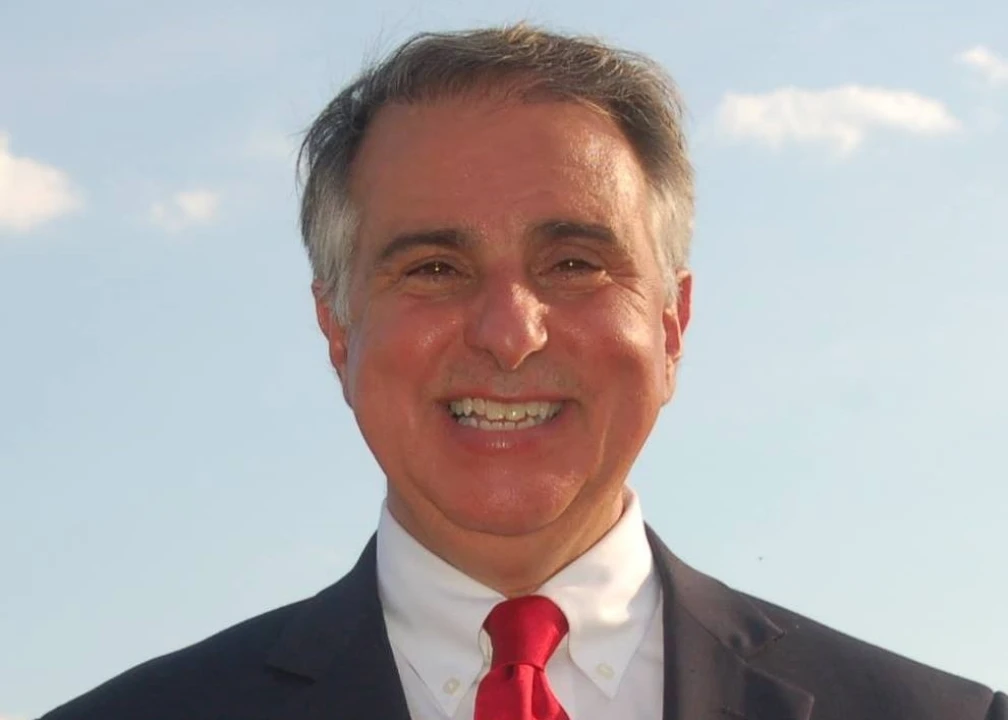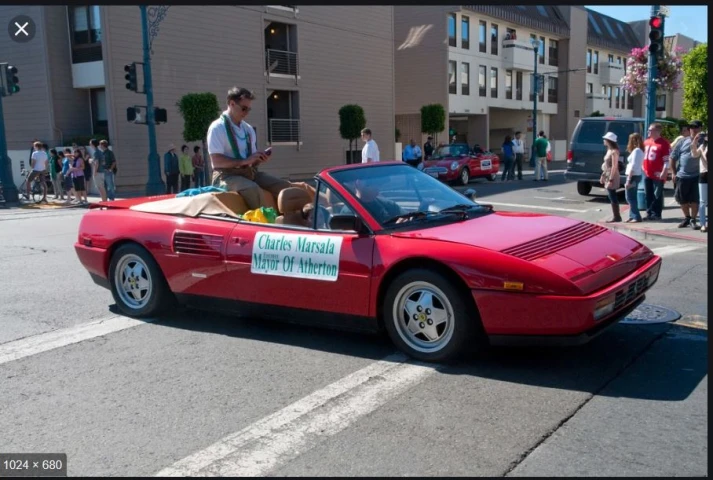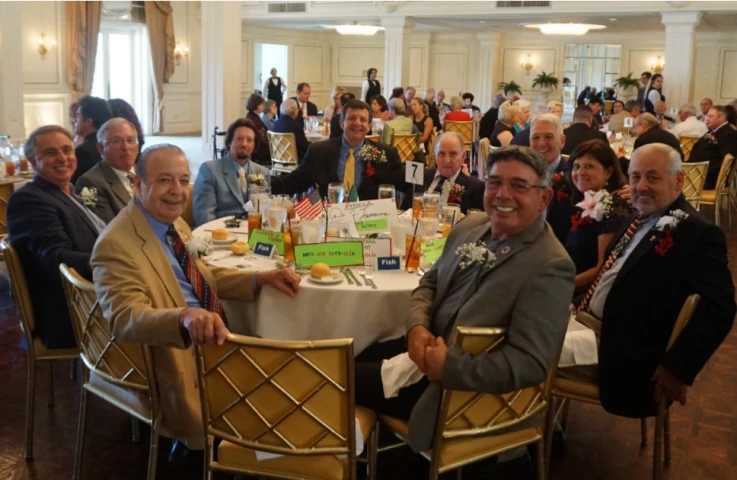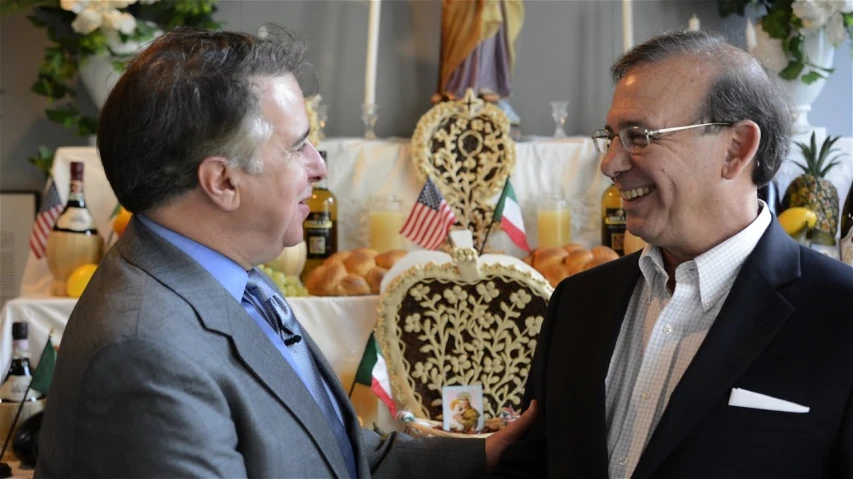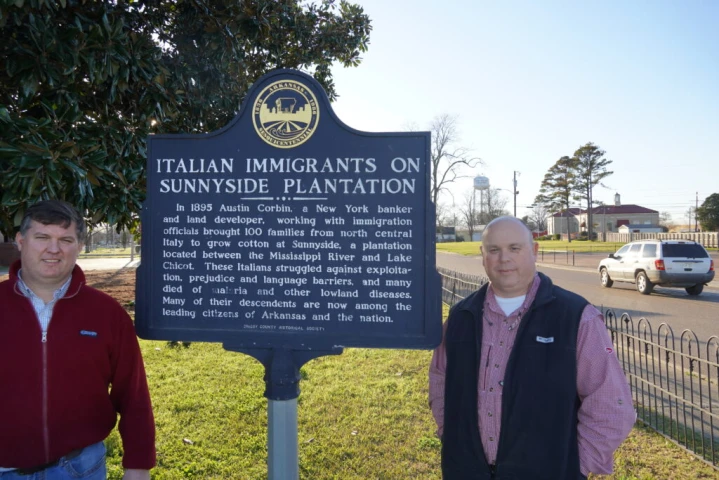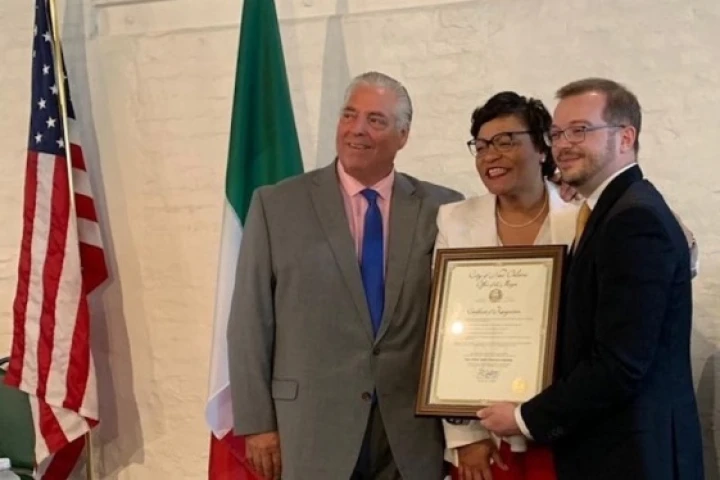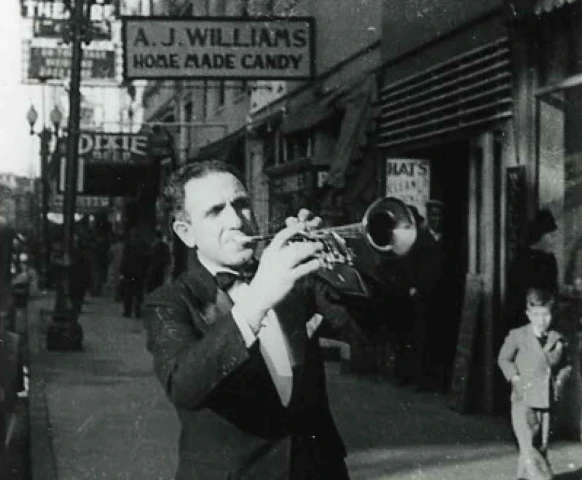This interview with Charles Marsala, who is bringing great news to the world of the Italian American community in New Orleans and throughout the South East, was done right before the coronavirus pandemic broke out in Italy, and then a couple of weeks before it also arrived in the United States.
It is therefore a picture of the world before the coronavirus: but Charles' energy and love for Italy are and will be in New Orleans, Louisiana and the South East even when all this will end, to represent the exceptionality of the meeting between these two extraordinary countries, today wounded by a sneaky and invisible common enemy, but always brothers. Thanks to my friend Charles Marsala, and to all, please stay safe
Hi Charles, let’s start with a little bit about you: you are 100% Sicilian, am I right?
I was born in 1960, in New Orleans, my parents were from Monroe, Louisiana. In the early sixties there still was a Little Italy in Monroe.
I did the DNA Test 98% Sicilian and 2% Greek. Maybe from those that settled from Contessa Entellina. Other ancestors are from Cefalù, Salaparuta and Bisaquino.
I’ve read that you own a famous Ferrari…
Yes, I am the owner of the Ferrari Al Pacino drove in the movie “Scent of a Woman.” It is a wonderful 1991 Mondial T. I worked for Lista International Corp of Switzerland as their Northwest Regional Sales Manager. The owner raced a Ferrari 333 SP in American Le Mans Series. I would host hospitality events for his Northern California races.
I found the car on e-bay. I was Mayor of the city of Atherton in California and rode with the Ferrari in the San Francisco Columbus Day Parade for 3 years.
You are the President of the American-Italian Federation of the Southeast. I must admit that I find very very interesting the federation. Please describe the story and the activities of this beautiful community that reunites several associations
This is an honor for me, as in the 1950s-1970s my grandfather Charles Vincent Marsala Sr. was very active in forming an association of six Italian Clubs in north Louisiana. Joseph Maselli Sr. travelled to Monroe in Louisiana to meet with my grandfather for advice when Maselli was starting the National Federation in the 1970s. Later my grandfather received a Cavalieri Award.
We currently have 20 organizations in Louisiana and Mississippi. I met with a group in Southeast Arkansas last month and there are groups in Pensacola (Florida) and Houston (Texas) I would like to see join.
We provide a $1,000.00 scholarship annually during the New Orleans American Italian Sports Banquet. We have raised funds to endow an Italian seat at Louisiana State University, and to help with the church where in 1689 the Italian explorer Enrico Tonti left a note that was used by Jean-Baptiste Le Moyne de Bienville to claim Louisiana from France.
We are involved with promoting research of our heritage and culture: ten years ago the Italian Genealogy Research facility opened on the second floor of the Jefferson Parish Main Library.
The clubs and organizations are very active. Social Media, emails, and other digital communication are a means to promote activities at a low cost.
Besides the larger cities like New Orleans, Metairie, Kenner, Shreveport and Baton Rouge, smaller towns such as Donaldsonville, Lake Village, Gulf Port, Tickfaw and Independence are creating new and successful events.
Thus the role of the officers and board of the Federation is to add strength by connecting these organizations together for resources. I have suggested we add a Young Italians social at the July 2019 convention in Baton Rouge.
In 2014 the next generation of leadership in New Orleans started a renaissance. Lena Prima returned to New Orleans from Las Vegas, Frank Maselli became the Italian Honorary Consul. Lena’s album was released last year and Frank finished a $700,000.00 renovation of the American Italian Cultural Center.
I see my role as promoting the activities of our chapters, organizing our bi-annual convention and fostering the exchange of best practice ideas for our clubs.
You recently launched a very interesting educational media program, involving three different tools: a YouTube channel, an App that describes the most interesting “Italian” places in New Orleans, and a Newsletter. Please tell us more about this
Being in Silicon Valley from 1984 to 2012 I was very aware of digital media innovation. I still own an office building in Menlo Park, which is where Facebook is located.
My dad was into photography, I can remember getting a camera at age 12 for a birthday present. My maternal grandfather opened “Geno’s Italian Restaurant” in Monroe in 1964. Thus, I am very much aware that we need to record the story of those still with us.
New Orleans’ French Quarter is unique for its size of a dedicated Historic District in any city. I can remember in the 1960s there was still a heavy Italian/Sicilian influence in the stores. From 1885 to 1915 there were so many Sicilians in the French Quarter it was called “Little Palermo.” The following generations achieved success and significance: it is a great American dream story to tell.
Last year I began the process of erecting Historic Markers in the French Quarter of New Orleans to tell our story and provide a QR Code to the free tour guide Mobile App we made.
The process is long and time consuming. There are three levels for the State approval: Department of Tourism, LSU History Department, and a Government Committee for Political Review. They only accept proposals once a year.
I was able to find a spot for the Italian and Sicilian contributions to music including Nick La Rocca, Louis Prima, and Cosimo Matassa at the Jazz Museum. The Jazz Museum currently has a Louis Prima exhibit and is managed by the State of Louisiana.
However, there is a second marker, that we have yet to receive approval to erect. It tells the story of the eleven pasta factories opening in the French Quarter after the 1897 Dingley Tariff Act on pasta imports. The reverse side described the protection given by the 280 members of the Italian Battalion to New Orleans in late April 1862 for a peaceful transition back to the Union. That week, the city across the river (Algiers) was burned and looted.
I am looking to install markers about Mother Cabrini, who arrived in New Orleans in 1892 to help with Yellow Fever Epidemic; and to Salvatore Catalano, who was the pilot on Captain Stephen Decatur’s ship of 1804 for the Barbary Coast War. Decatur Street in the French Quarter is named after Stephen Decatur.
So far we have filmed, but not yet finished editing, eight episodes on the Sicilian Migration to New Orleans. Each episode is 30 minutes long. They can be seen on our You Tube Channel “Awe News”.
Last year you were among those who achieved an extraordinary result: the Mayor of New Orleans in person officially apologized to the Italian community for the shameful lynching of 11 Italian Americans in 1891, killed by an angry mob despite being tried and acquitted for the murder of the chief of police. How did you do this?
The Mayor of New Orleans from 2010-2018 was Mitch Landrieu. Mitch and I were in the same homeroom our senior year of high school in 1977-1978. I was Student Council President and had run against his best friend – James Federoff.
When Mitch ran for re-election in 2014, he never mentioned removing monuments in his campaign objectives. Thus when Mitch announced in 2015 he wanted to start removing the monuments of New Orleans, I had many questions. First: there are ten Confederate pieces in New Orleans, why only remove four? Second: what about other monuments, such as Christopher Columbus, Andrew Jackson, and the Slave Pirate Jean Lafitte?
The process Mitch was setting forth was that any Mayor of New Orleans could take down art worth millions and write a restrictive bid to sell it to their campaign donors. I challenged this process to the City Council.
The new Mayor-elect LaToya Cantrell asked a contact to form a committee to recommend a solution to the four pieces of art Mitch removed. The value of the art is from $4 million to $25 million. I was asked to be on this committee. Later I became the spokesperson on TV and was interviewed frequently.
I proposed a solution different from the majority of the committee. New Orleans Businessman and philanthropist Frank Stewart agreed with me.
Thus, when Michael Santo of New York of the Order Sons and Daughters of Italy was looking for local contact, Sal Perricone gave him my name. This was December 2018. Sal is writing a book on the trial and case. He is a former Federal Prosecutor.
Mayor Cantrell emailed me later that month asking to meet with me and Frank regarding re-locating three of the monuments Mitch removed. She then offered me to present an agenda of any issue I had. I added the apology request to the agenda. She assigned a staff member, Vincent Pasquantonio, to facilitate the apology. In January 2019, Vincent, Michael, and I met in New Orleans to work out details.
Michael deserves great credit for making the event international and working with the Mayor’s office to build that relationship. People came from Los Angeles, Texas, and New York to attend to the ceremony.
The night before, I hosted a dinner for 60 people at Andrea’s in Metairie, where we presented a new dish: “Alligator Marsala.”
We are currently researching the case of who killed the police chief.
Knowing you, I know you're already preparing several new things representing Italian in New Orleans and Louisiana... can you please give us a small preview?
We are considering a concert in front of the Italian Fountain in the Piazza. Joseph Maselli worked with Moon Landrieu in the 1970s to have the Piazza created with an amazing fountain in the shape of Italy.
I would like to do a story on former Mayor Victory Schiro and his achievements in the 1960s for New Orleans, which included the Superdome, the New Orleans Saints, NASA and the Apollo Booster Rocket, creating the Central Business District, and Walt Disney adding New Orleans to Disneyland.
We made a five minute video for the episode on Italian Musicians that includes Nick La Rocca and his ambassadorship for the beginning of Jazz during 1915-1919. Nick’s first album used the term “Jass” while in his next album he changed the named to “Jazz”: there is a great story as far as the reason of the change.
Questa intervista con Charles Marsala, che sta portando grandi novità nel mondo della comunità italoamericana di New Orleans e di tutto il South East, è stata fatta qualche giorno prima che la pandemia di coronavirus scoppiasse in Italia, e quindi un paio di settimane prima che arrivasse anche negli Stati Uniti.
E' quindi una fotografia del mondo prima del coronavirus: ma l'energia e l'amore per l'Italia di Charles sono e saranno a New Orleans, in Louisiana e nel South East anche quando tutto questo finirà, a rappresentare l'eccezionalità dell'incontro tra questi due straordinari Paesi, oggi feriti da un nemico comune subdolo e invisibile, ma sempre fratelli. Grazie al mio amico Charles Marsala, e a tutti, please stay safe
Ciao Charles, cominciamo un po' con te: hai origini siciliane al 100%, giusto?
Sono nato nel 1960, a New Orleans, i miei genitori erano di Monroe, Louisiana. Nei primi anni Sessanta c'era ancora una Little Italy a Monroe.
Ho fatto il test del DNA: sono al 98% siciliano e al 2% greco. Forse le mie origini provengono da coloro che si sono stabiliti qui venendo da Contessa Entellina. Altri antenati sono di Cefalù, Salaparuta e Bisaquino.
Ho letto che possiedi una famosa Ferrari...
Sì, sono il proprietario della Ferrari che Al Pacino guidava nel film "Profumo di donna". È una meravigliosa Mondial T. Nel 1991 lavoravo per la Lista International Corp of Switzerland come responsabile delle vendite regionali del Nord Ovest. Il proprietario ha corso con una Ferrari 333 SP nella American Le Mans Series. Organizzavo eventi di ospitalità per le sue gare nella California del Nord.
Trovai la macchina su e-bay. Sono stato sindaco della città di Atherton in California e ho guidato la Ferrari nella parata del San Francisco Columbus Day Parade per 3 anni.
Tu sei il presidente della American-Italian federation of the Southeast. Trovo molto interessante questa federazione. Ti prego di descrivere la storia e le attività di questa bella comunità che riunisce diverse associazioni
Questo ruolo è un onore per me, perché negli anni '50 e '70 mio nonno Charles Vincent Marsala Sr. era molto attivo nella formazione di un'associazione di sei club italiani nel nord della Louisiana. Joseph Maselli Sr. si recò a Monroe in Louisiana per incontrare mio nonno per un consiglio quando Maselli stava fondando la Federazione Nazionale negli anni Settanta. Più tardi mio nonno fu nominato Cavaliere della Repubblica.
Attualmente abbiamo 20 organizzazioni in Louisiana e Mississippi. Ho incontrato un gruppo nel sud-est dell'Arkansas il mese scorso e ci sono gruppi a Pensacola (Florida) e Houston (Texas) a cui vorrei partecipare.
Sosteniamo una borsa di studio di 1.000,00 dollari all'anno durante il New Orleans American Italian Sports Banquet. Abbiamo raccolto fondi per dotare una sede italiana alla Louisiana State University, e per aiutare la chiesa dove nel 1689 l’esploratore italiano Enrico Tonti lasciò un biglietto che fu usato da Jean-Baptiste Le Moyne de Bienville per reclamare la Louisiana dalla Francia.
Ci occupiamo di promuovere la ricerca del nostro retaggio italiano e della nostra cultura: dieci anni fa è stata aperta la struttura di ricerca sulla genealogia italiana al secondo piano della Biblioteca principale della parrocchia di Jefferson.
I club e le organizzazioni sono molto attivi. I social media, la posta elettronica e altre forme di comunicazione digitale sono un mezzo per promuovere attività senza spendere troppo.
Oltre alle città più grandi come New Orleans, Metairie, Kenner, Shreveport e Baton Rouge, città più piccole come Donaldsonville, Lake Village, Gulf Port, Tickfaw e Independence stanno creando nuovi eventi di successo.
Il ruolo di tutti coloro che hanno un ruolo nella Federazione è quello di aggiungere forza collegando queste organizzazioni tra loro per condividere le risorse. Ho suggerito di aggiungere un club dedicato agli italiani più giovani al convegno di luglio 2019 a Baton Rouge.
Nel 2014 la nuova generazione di leader di New Orleans ha iniziato una rinascita. Lena Prima è tornata a New Orleans da Las Vegas, Frank Maselli è diventato Console Onorario d’Italia. L'album di Lena è uscito l'anno scorso e Frank ha terminato un restauro da 700.000 dollari dell’American Italian Cultural Center.
Il mio ruolo è quello di promuovere le attività delle nostre associazioni, organizzare la nostra convention biennale e favorire lo scambio di idee e di attività tra i nostri club.
Recentemente hai lanciato un programma educativo multimediale molto interessante, che coinvolge tre diversi strumenti: un canale YouTube, un'App che descrive i luoghi "italiani" più interessanti di New Orleans, e una Newsletter. Dicci di più su questo
Essendo stato in Silicon Valley dal 1984 al 2012 ho conosciuto molto da vicino l'innovazione dei media digitali. Possiedo ancora un edificio per uffici a Menlo Park, dove si trova Facebook.
Mio padre era appassionato di fotografia, ricordo di aver ricevuto una macchina fotografica all'età di 12 anni come regalo di compleanno. Mio nonno materno aprì il “Geno’s Italian Restaurant” a Monroe nel 1964. Quindi, sono molto consapevole della necessità di documentare la storia di chi è ancora con noi.
Il Quartiere Francese di New Orleans è unico per le sue dimensioni di quartiere storico dedicato ad uno specifico tema. Ricordo che negli anni '60 c'era ancora una forte influenza italiana/siciliana nei negozi. Dal 1885 al 1915 c'erano così tanti siciliani nel Quartiere Francese che era chiamato "Little Palermo". Le generazioni successive hanno raggiunto successo e rilevanza: è una grande storia sul sogno americano da raccontare.
L'anno scorso ho iniziato il processo di costruzione dei punti di informazione storici nel quartiere francese di New Orleans per raccontare la nostra storia e fornire un QR Code alla App di guida turistica gratuita che abbiamo realizzato.
Il processo è lungo e richiede tempo. Ci sono tre livelli per l'approvazione dello Stato: il Dipartimento del Turismo, il Dipartimento di Storia della LSU e un Comitato governativo. Accettano proposte solo una volta all'anno.
Ho potuto trovare un posto per i contributi storici italiani e siciliani alla musica, in cui sono citati artisti tra cui Nick La Rocca, Louis Prima e Cosimo Matassa al Museo del Jazz, che ha attualmente una mostra su Louis Prima ed è gestito dallo Stato della Louisiana.
C'è però un altro punto di informazione, del quale non abbiamo ancora ricevuto l'approvazione per l'allestimento. Racconta la storia degli undici pastifici che aprirono nel Quartiere Francese dopo il Dingley Tariff Act del 1897 sulle importazioni di pasta. Sull’altro lato del punto di informazione si descrive la lotta a difesa della città che coinvolse i 280 membri del Battaglione italiano a New Orleans alla fine di aprile 1862, al fine di arrivare quanto più possibile in pace all’Unione. Quella settimana, la città dall'altra parte del fiume (Algiers) fu bruciata e saccheggiata.
Sto cercando di installare dei punti di informazione su Madre Cabrini, che arrivò a New Orleans nel 1892 per dare il proprio aiuto durante l'epidemia di febbre gialla; e su Salvatore Catalano, che fu il pilota della nave del capitano Stephen Decatur del 1804 nella prima guerra barbaresca. Decatur Street nel quartiere francese prende il nome proprio da Stephen Decatur.
Finora abbiamo girato, ma non ne abbiamo ancora finito il montaggio, otto episodi sull’emigrazione siciliana a New Orleans. Ogni episodio è lungo 30 minuti. Si possono vedere sul nostro canale You Tube "Awe News".
L'anno scorso siete stati tra coloro che hanno ottenuto un risultato straordinario: il sindaco di New Orleans si è scusato ufficialmente di persona con la comunità italiana per il vergognoso linciaggio di 11 italoamericani nel 1891, uccisi da una folla inferocita nonostante fossero stati processati e assolti per l'omicidio del capo della polizia. Come avete fatto?
Il sindaco di New Orleans dal 2010 al 2018 era Mitch Landrieu. Mitch ed io eravamo in classe insieme nel nostro ultimo anno di liceo nel 1977-1978. Io ero presidente del consiglio studentesco e mi ero candidato contro il suo migliore amico, James Federoff.
Nella sua campagna per la rielezione a sindaco nel 2014, Mitch non menzionò mai la rimozione di monumenti nei suoi obiettivi. Così, quando annunciò nel 2015 di voler iniziare a rimuovere i monumenti di New Orleans, avevo molte domande. La prima: ci sono dieci monumenti confederati a New Orleans, perché rimuoverne solo quattro? Secondo: che dire di altri monumenti, come Cristoforo Colombo, Andrew Jackson e il pirata schiavo Jean Lafitte?
Il processo che Mitch proponeva era che qualsiasi sindaco di New Orleans potesse demolire opere d'arte del valore di milioni di euro e poi metterli in vendita a trattativa privata ai donatori della sua campagna. Ho sfidato questo progetto di fronte al Consiglio Comunale.
Il nuovo sindaco eletto LaToya Cantrell mi contattò per formare un comitato che raccomandasse una soluzione per i quattro monumenti rimossi da Mitch. Il valore di questi monumenti va dai 4 ai 25 milioni di dollari. Mi è stato chiesto di far parte di questo comitato. In seguito ne sono diventato il portavoce in TV e sono stato intervistato spesso.
Ho proposto una soluzione diversa da quella della maggioranza del comitato. L'uomo d'affari di New Orleans e filantropo Frank Stewart era d'accordo con me.
Così, quando Michael Santo dell'OSDIA di New York cercava un contatto locale, Sal Perricone gli ha dato il mio nome. Era il dicembre 2018. Sal sta scrivendo un libro su tutto ciò. È un ex procuratore federale.
Il sindaco Cantrell mi mandò un'email chiedendomi di incontrare me e Frank per il ricollocamento di tre dei monumenti rimossi da Mitch. Successivamente mi propose di presentare un ordine del giorno su qualsiasi questione io ritenessi importante. E io aggiunsi la richiesta di scuse all'ordine del giorno. Lei assegnò la questione ad un membro del suo staff, Vincent Pasquantonio, per facilitare le scuse. Nel gennaio 2019, Vincent, Michael ed io ci incontrammo a New Orleans per definire i dettagli.
Michael merita un grande riconoscimento per aver reso l'evento internazionale e per aver lavorato con l'ufficio del sindaco per portare a termine la cosa nel giusto modo. Sono arrivate persone da Los Angeles, dal Texas e da New York per partecipare alla cerimonia.
La sera prima ho ospitato una cena per 60 persone da Andrea’s a Metairie, dove abbiamo presentato un nuovo piatto: "Alligator Marsala".
Al momento stiamo facendo ricerche sul caso, per provare a capire chi uccise il capo della polizia.
Conoscendoti, so che stai già preparando diverse novità in rappresentanza della comunità italiana a New Orleans e in Louisiana... ci puoi dare una piccola anteprima?
Stiamo pensando di fare un concerto davanti alla fontana in Piazza Italia. Joseph Maselli ha lavorato con Moon Landrieu negli anni Settanta per far realizzare la Piazza con una fantastica fontana a forma di Italia.
Vorrei fare una storia sull'ex sindaco Victory Schiro e sui suoi successi negli anni '60 per New Orleans, tra i quali la realizzazione del Superdome, i New Orleans Saints, la NASA e l'Apollo Booster Rocket, la creazione del Central Business District, e il fatto che Walt Disney aggiunse il tema di New Orleans a Disneyland.
Abbiamo realizzato un video di cinque minuti sui musicisti italiani che include Nick La Rocca come ambasciatore in rappresentanza dell'inizio del Jazz nel periodo che va dal 1915 al 1919. Il primo album di Nick usava il termine "Jass", mentre nel suo album successivo lo cambiò in "Jazz": c'è una grande storia dietro il motivo del cambiamento.


